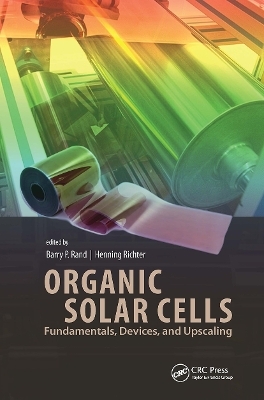
Organic Solar Cells
Pan Stanford Publishing Pte Ltd (Verlag)
978-981-4463-65-2 (ISBN)
Barry P. Rand earned a BE in electrical engineering from The Cooper Union, USA, in 2001. Then he received an MA and a PhD in electrical engineering from Princeton University, USA, in 2003 and 2007, respectively. From 2007 to 2013, he was at imec in Leuven, Belgium, ultimately as a principal scientist, researching the understanding, optimization, and manufacturability of thin-film solar cells. Since 2013, he is an assistant professor in the Department of Electrical Engineering and the Andlinger Center for Energy and the Environment at Princeton University. Prof. Rand’s research interests highlight the border between electrical engineering, materials science, chemistry, and applied physics, covering electronic and optoelectronic thin films and devices, devices composed of nanostructured media, and plasmonics. He has authored more than 60 refereed journal publications and has 14 issued US patents. Henning Richter was trained as a chemist in Germany and Belgium and has been working for more than 15 years on the synthesis and characterization of carbonaceous nanostructures. He is currently director of materials synthesis research at Nano-C, Inc., and visiting scientist at the Massachusetts Institute of Technology (MIT). Before joining Nano-C in 2001, he conducted research on fullerene and soot formation in the Department of Chemical Engineering at MIT. At Nano-C, Henning has been involved in the further development of selective combustion synthesis of fullerenes and single-walled carbon nanotubes as well as their purification and chemical functionalization to mature industrial processes. In his ongoing work, Dr. Richter is particularly interested in the design of fullerene derivatives with selected physical, chemical, and electronic properties. Henning is co-inventor of several patents and patent applications for the production, separation, and purification of fullerenic materials as well as their use in organic photovoltaics.
Preface, Part I: Materials and Device Architectures, Part II: Characterization, Modeling, and Fundamental Insights, Part III: Technology, Lifetime, and Production
| Zusatzinfo | 31 Illustrations, color; 215 Illustrations, black and white |
|---|---|
| Verlagsort | Singapore |
| Sprache | englisch |
| Maße | 152 x 229 mm |
| Gewicht | 880 g |
| Themenwelt | Naturwissenschaften ► Chemie ► Organische Chemie |
| Naturwissenschaften ► Chemie ► Technische Chemie | |
| Naturwissenschaften ► Physik / Astronomie | |
| Technik ► Elektrotechnik / Energietechnik | |
| Technik ► Maschinenbau | |
| Technik ► Umwelttechnik / Biotechnologie | |
| ISBN-10 | 981-4463-65-5 / 9814463655 |
| ISBN-13 | 978-981-4463-65-2 / 9789814463652 |
| Zustand | Neuware |
| Haben Sie eine Frage zum Produkt? |
aus dem Bereich


